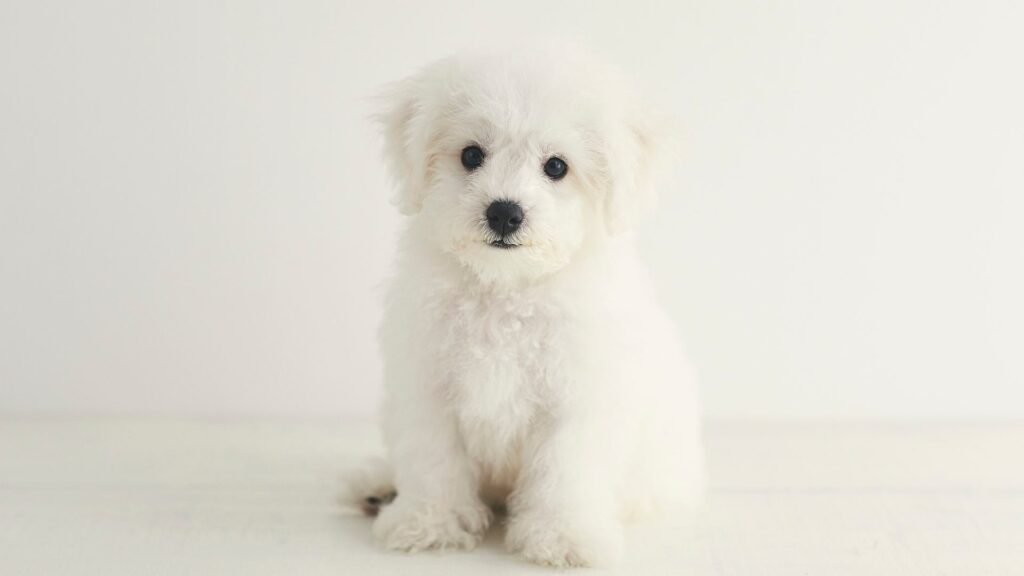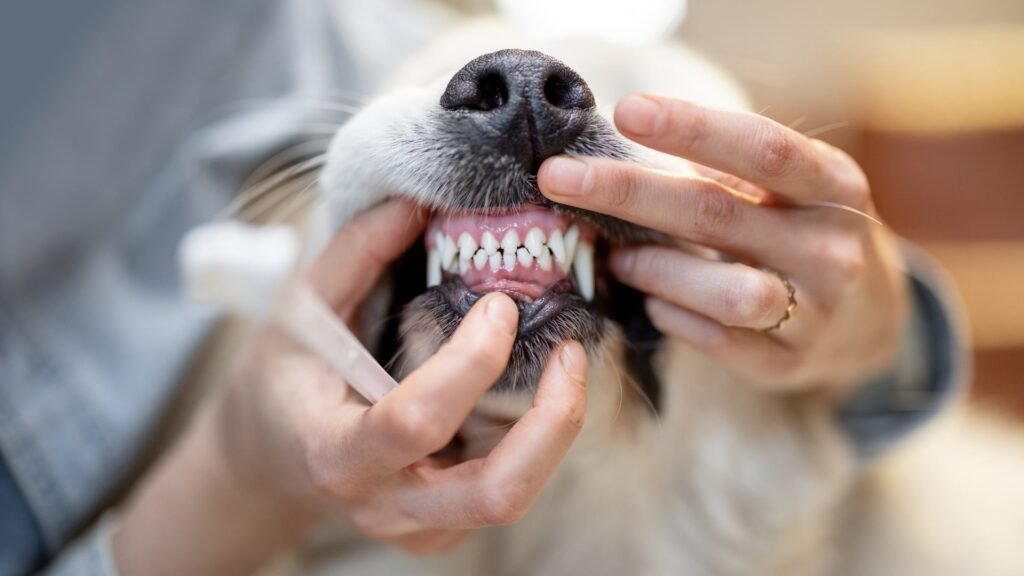You might look at your dog’s smile and wonder how those teeth work. Do they have the same number as humans? Why do puppies chew everything? Understanding your dog’s teeth is more than trivia. It’s key to their health. Just like humans, dogs need proper dental care to avoid pain or illness. This article breaks down everything from puppy teething to adult dental care. You’ll learn how many teeth your dog should have, how they develop, and what you can do to keep them healthy. Let’s start with the basics.
- How Many Teeth Do Dogs Have?
- Puppy Teeth vs. Adult Dog Teeth
- Types of Dog Teeth and Their Functions
- Dog Dental Development Timeline
- Common Dental Issues in Dogs
- How to Keep Your Dog’s Teeth Healthy
- When to See a Veterinarian About Your Dog’s Teeth
- FAQs About Dog Teeth
- Do all dogs have the same number of teeth?
- Can dogs live with missing teeth?
- How much does dog dental care cost?
- Why do small breeds have more dental problems?
- Conclusion
Related Read: How to cut dog nails safely at home
How Many Teeth Do Dogs Have?
An adult dog should have 42 teeth in total. These are split into 20 on top of their jaw and 22 on the bottom. This count is standard for most breeds. Puppies start with fewer teeth but by seven months they should reach the full set. If your adult dog does have fewer teeth than 42 they might have lost or broken a tooth. Small breeds often face more dental issues but all dogs rely on strong teeth for eating playing and overall health.
Puppy Teeth vs. Adult Dog Teeth
Dogs don’t start with that full set of 42. Their dental journey begins a bit differently, and it’s fascinating to see how it unfolds.
Puppy (Deciduous) Teeth
Puppies arrive in this world without teeth. Those little gums are soft and toothless at first. But around 3 to 4 weeks old, things change. That’s when their puppy teeth, also called deciduous teeth, start to pop up. A puppy has 28 deciduous teeth by about 6 to 8 weeks. These tiny, sharp teeth help them move from milk to solid food. They’re temporary, though, and soon make way for the adult set.
Adult Teeth
The shift to adult teeth kicks off around 3 to 5 months of age. Puppy teeth falling out can feel like a milestone. You might even find one on the floor! By 3 to 7 months of age, the permanent teeth in dogs start growing in. Most dogs have all 42 adult teeth by 7 months. That’s the adult dog teeth count we aim for. Some dogs, especially smaller breeds, tend to take longer. But once they’re there, those teeth are built to last.
Types of Dog Teeth and Their Functions
Dogs don’t just have one kind of tooth. They have a whole team of teeth, each with its own job. Let’s break it down so you can picture what’s going on in your dog’s mouth.
Incisors
First up are the incisors. These are the small teeth in the front of the mouth. An adult dog has six on the upper jaw (the maxilla) and six on the mandible (the lower jaw). They’re perfect for scraping or nibbling food. Ever watch your dog groom themselves or pick up a tiny treat? That’s the incisors at work. They’re not the flashiest teeth, but they get the job done.
Canines
Then we have the canines. These are the longest teeth, and they stand out. Dogs have four canine teeth, two on top and two on the bottom. You’ll spot them right next to the incisors. They’re the ones your dog uses to grab objects or tear into food. Think of them as the heavy lifters. When your dog proudly carries items in their mouth, those canines make it possible. They’re strong and can’t break easily, which is why dogs love to show them off.
Premolars
Behind the canines sit the premolars. Adult dogs have 16 premolars, eight on the top jaw and eight on the bottom jaw. These teeth are all about shearing. They cut food into smaller bits so your dog can swallow it comfortably. If you’ve ever seen your dog chew something tough like a thick stick, the premolars handle the slicing. They’re sharp and ready for action.
Molars
Last but not least are the molars. Dogs have 10 of these, four on the upper jaw and six on the lower. They’re the grinders. Molars crush and mash food, especially dry kibble or hard treats. They’re broader than the other teeth, built to tackle the heavy-duty work. Together, all these teeth—incisors, canines, premolars, and molars—keep your dog eating, playing, and thriving. Pretty cool how they each have a role, right?
Dog Dental Development Timeline

So, when do all these teeth show up? The dog teething timeline is a journey worth knowing. It helps you understand what your pup goes through. Puppies start as newborns with no teeth. For the first few weeks, they rely on mom’s milk. Then, around 3 to 4 weeks old, the age of eruption begins. Those 28 puppy teeth emerge, and by 6 to 8 weeks, puppies typically have all 28 of their puppy teeth. It’s a big step as they explore solid food.
Next comes the teething stage. Around 3 to 4 months old, they start losing their teeth. It’s normal to see them drop. At the same time, adult teeth start pushing through. This transition to permanent adult teeth happens between 3 and 5 months of age. By 7 months old, most dogs boast a full adult mouth with 42 teeth. Smaller breeds might lag a bit, but they catch up. Knowing this timeline helps you spot when your dog needs extra care—like a chew toy during teething!
Common Dental Issues in Dogs
Retained Baby Teeth
Retained teeth are common in toy breeds. Signs include double rows of teeth or visible crowding. Left untreated they trap food and bacteria leading to tartar buildup or gum infections. Extraction is a simple fix if caught early.
Tooth Loss
Adult tooth loss often stems from periodontal disease or trauma. Dogs who chew hard objects like stones or thick sticks risk cracking teeth. A lost tooth leaves the root exposed inviting infection. If your dog suddenly avoids hard food or paws at their mouth inspect their teeth.
Tartar Buildup and Gum Disease
Plaque forms within hours after eating. Without brushing it hardens into tartar within days. Tartar irritates the gums causing gingivitis (red swollen gums). Advanced gum disease erodes the jawbone and can spread bacteria to the heart or kidneys.
Broken or Cracked Teeth
Fractured teeth expose the pulp cavity where nerves and blood vessels live. This is extremely painful and requires immediate care. Avoid giving your dog antlers hooves or hard nylon bones which can’t break down safely.
How to Keep Your Dog’s Teeth Healthy

Regular Brushing
Brushing is the best way to protect your dog’s teeth. Use a soft-bristled toothbrush or a finger brush and dog-specific toothpaste (never human toothpaste—it’s toxic to dogs). Start slow: let your dog sniff the brush and taste the paste, then brush for a few seconds, building up to longer sessions. Aim for two to three times a week, focusing on the outer tooth surfaces where plaque builds up most. Even older dogs can get used to brushing—it’s never too late to begin.
Professional Dental Cleanings
For some dogs, especially those with heavy tartar, a professional cleaning is necessary. Done under anesthesia by a vet, this removes tartar above and below the gumline and checks for hidden problems. Most dogs need this once a year, though some require it more often. It’s a worthwhile investment to keep their mouth healthy.
Dental Chews and Toys
Dental chews and toys can help clean teeth between brushings. Look for products designed to reduce plaque and tartar, like rubber toys with nubs or vet-approved chews. Make sure they’re the right size for your dog and supervise their use. Avoid hard items like bones that could break teeth. These are a great bonus to your routine, not a substitute for brushing.
Proper Diet for Dental Health
Diet plays a role too. Dry kibble can help scrape plaque off teeth as your dog chews, especially dental-specific formulas. Wet food, however, can stick to teeth, so you might need to brush more often if that’s your dog’s diet. Steer clear of sugary or sticky table scraps, which promote decay. A balanced diet with the right texture supports cleaner teeth.
When to See a Veterinarian About Your Dog’s Teeth
Sometimes, despite your efforts, your dog’s teeth need a vet’s attention. Watch for these signs:
- Persistent bad breath that brushing doesn’t fix
- Difficulty eating or chewing on one side
- Visible tartar or yellow/brown stains
- Red, swollen, or bleeding gums
- Loose or missing teeth
- Broken or cracked teeth
- Excessive drooling or pawing at the mouth
If you spot any of these, schedule a vet visit. Early action can prevent pain and bigger problems later.
FAQs About Dog Teeth
Do all dogs have the same number of teeth?
Most adult dogs have 42 teeth—20 on top, 22 on the bottom. Puppies start with 28 baby teeth. Some dogs may have fewer due to loss or congenital quirks, especially in smaller breeds, but 42 is the norm.
Can dogs live with missing teeth?
Yes, dogs adapt well to missing teeth, particularly if it’s just a few. They might need softer food or smaller bites, but most cope fine. For significant tooth loss, your vet can suggest adjustments.
How much does dog dental care cost?
Preventive dental care such as brushing one’s teeth is much less expensive and provides long-term benefits. Nonetheless, cleanings alone can cost somewhere between $200 to $800, with additional procedures such as extractions and other treatments significantly increasing the total cost.
Why do small breeds have more dental problems?
The compact jaws in small breeds cause dental crowding and reduced space between the teeth which can complicate cleaning. This makes them more susceptible to plaque and tartar buildup, and the higher chance of retaining baby teeth increases the risk of misalignment. For these reasons, extra care and attention is important for these dogs.
Conclusion
Your dog has 42 teeth in total. Retained baby teeth, loose teeth, gum disease, or fractured teeth are common issues that dogs face which greatly impact their comfort, eating, and overall dental health. Most dental issues are preventable with regular brushing, professional cleanings, dental treats, and smart dieting. If there is suspicion of an underlying problem, visiting a veterinarian is strongly advised. Therefore, for good oral health in the future, taking the time to care for your dog’s teeth now will keep their smile bright and healthy for years.